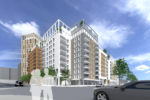8 Ways to Transform Used Shipping Containers

The global conversation on climate change and sustainability are becoming more urgent. This has caused people to seek out solutions to reduce negative impacts on the environment. A great way to become more sustainable is to repurpose existing materials. One increasingly popular trend is the transformation of old shipping containers. These containers are built from high strength steel, made to withstand the harsh conditions of the high seas. Their industrial appearance may seem off-putting, but there’s something charming about an object taking on a second life after it’s already travelled around the world. The shipping container is a symbol of …







